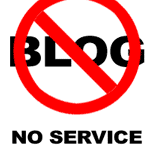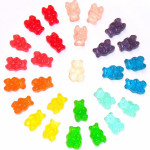Even if you are using a Vanity Press, hire a graphic designer, or create a book cover yourself, make sure you have explored the best options for your book (and budget).
6 Steps to Do When You’ve Finished Writing Your Book
You finished your First Draft. Time to celebrate – seriously. You need to give yourself time to recoup, because now, the hard part begins. Promotion, Publication and Marketing, oh my!
No Blog, No Service
Publishers are starting to require the existence of a blog before taking on any new authors. Sound harsh? In 2011, having a blog has moved from important to a mandatory requirement.
First Steps: Social Media Marketing for the Writer
For many, interfacing on twitter and facebook may be deemed a horrendous waste of time. Trust me – I was one of the naysayers. If you know how to use them, the social medias command a tremendous amount of marketing power.
Book Covers that Annoy Booksellers
An informative, tongue-in-cheek list of what to do if you WANT bookstores to NOT carry your book — something every writer desires, right?
eBook Cover Design Tutorial: Choosing Colors
More often than not, the topic of your book helps determine the color theme. For example, a book on babies or weddings use whites or soft pastels; murder mysteries may include red or black; boating, oceans and space science themes utilize blues, blacks or even green.
eBook Cover Design Tutorial: Breaking Down the Elements
A picture says a thousand words: for an author, it’s more like 120,000 words. The right book cover image is crucial for attracting customers. J.K. Rowlings’ cover art for the book, the Sorcerer’s Stone (Philosopher’s Stone), uses key ingredients to entice, but NOT reveal the story. Breaking down these elements into their basic parts, we can create a list to follow when you are creating your book covers. (This list is by no means definitive; feel free to add or substitute.)






